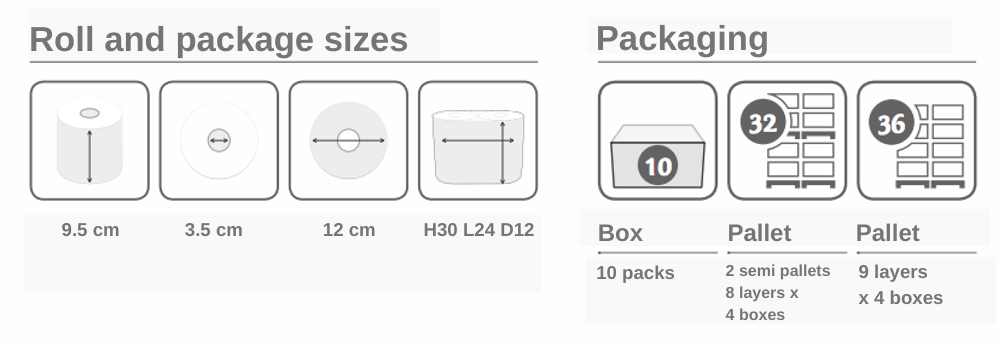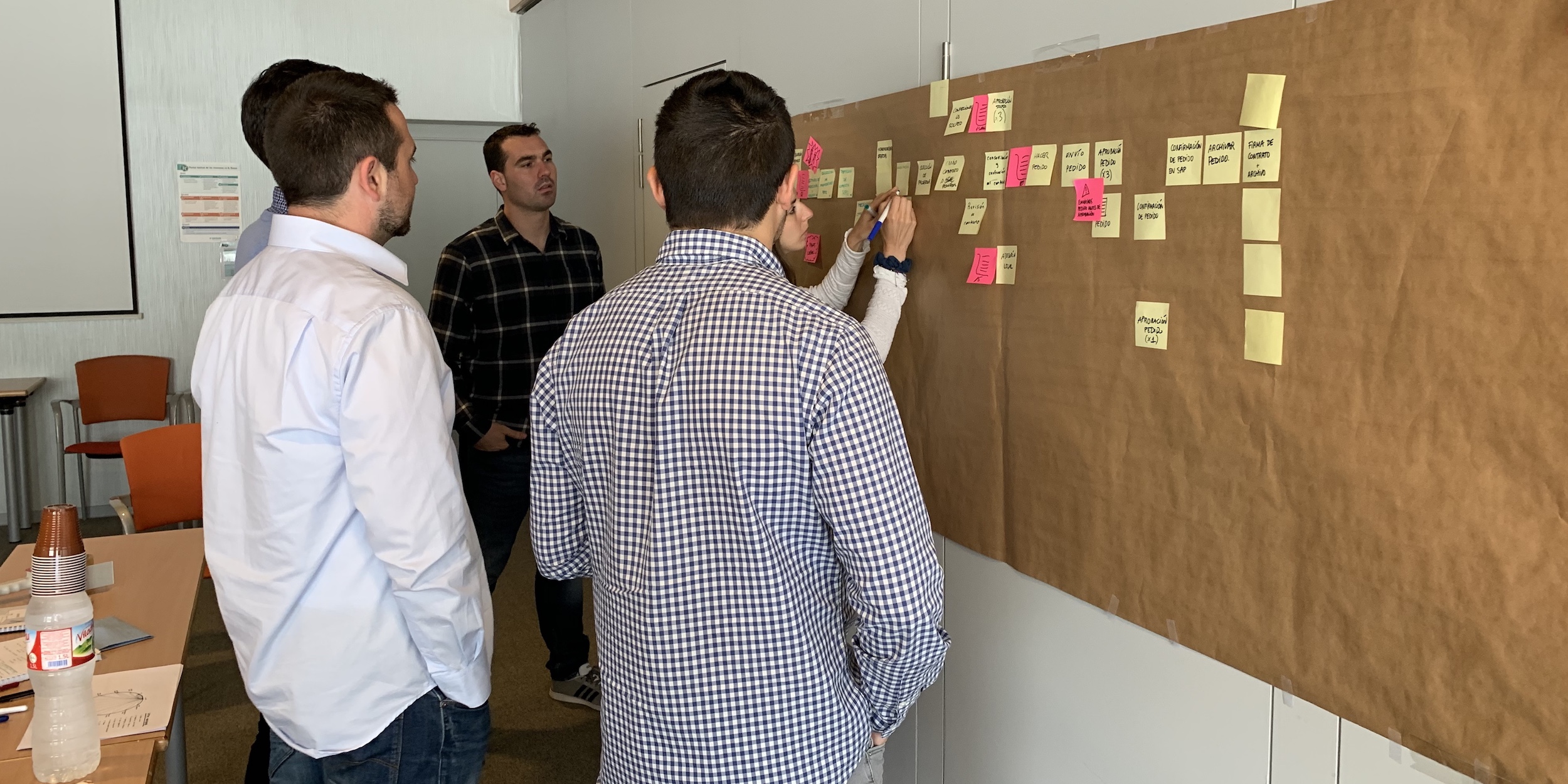
What lean marketing teaches us about packaging
FEATURE – What role does packaging play when it comes to marketing a product? The author discusses “lean packaging” and shares the example of an Italian toilet paper maker.
Words: Alessandro Martemucci, Lean Coach, Istituto Lean Management – Italy
The importance of packaging cannot be stressed enough. It is the “clothing” of your product and can really help boost your sales by making it stand out from the shelves. In this sense, packaging relates to two of the 4 Ps of marketing: not just Product, but also Promotion.
But what does it take for packaging to be considered lean? Marketing and communication specialists typically look at image, which is the essential component of the product together with color and materials making up the packaging. In some cases, we talk about neuropackaging, when neuromarketing techniques are applied to packaging to attract the consumer.
When planning for packaging, lean marketing teaches us to go beyond image and pay attention to the following fundamental factors: planning and design; sustainability and materials; logistics; production; innovation and digitization.
1. Planning and design
Planning your packaging has always represented an important part of your product strategy. The better thought out it is, the bigger the benefits both in terms of image and sales; the more hastily planned, the bigger the waste and hidden costs in the form of returns, defects or damaged products. There is more to planning than just brand positioning. There are also important technical aspects that should be considered, like ergonomics (to make it easier to handle the package), the choice of materials, and the function of the product itself. At Christmas time, for example, at least here in Italy, people seem to prefer buying bottles that come in a pouch – even if they are more expensive. In fact, the more elegant the packaging, the more value the customer will perceive.
2. Sustainability and materials
Sustainable materials lengthen the life of the product, potentially allowing for its re-use or for it to have a whole new life. Brands around the world are increasingly opting for sustainable packaging with the “cradle to cradle” concept in mind. For instance, selling coffee in a can not only keeps the quality of the product high, but is also an eco-friendly choice: people can use the can itself as a container for coffee and simply purchase refills when they run out. In this case, the image of the package itself becomes something of a household item, not to mention a storytelling device speaking to the company’s creativity.
3. Logistics
Truly lean packaging cannot just be attractive and functional; it needs to solve logistical problems as well. That means it needs to be less bulky, optimizing the use of space and reducing costs as well as CO2 emissions. Some examples? Space-saving boxes of napkins or concentrated laundry detergents. Here in Italy, catering company Autogrill recently modified the packaging of its sugar sachets, making them smaller and thus reducing the amount of raw materials used. This change led to a 9% reduction in the use of paper, corresponding to a saving of 4 tons per year. And was more than just a benefit for the environment or some waste elimination: as Arnaldo Camuffo wrote in his 2014 book L’arte di migliorare, the consumer benefited from the change with a more adequate amount of sugar in each sachet, with a positive effect on their health and lower glycemic risk.
4. Production time
A lean packaging also needs to be designed in a way that reduces set-up times on the production line, simplifies processes and minimizes machine downtime for changeovers.
5. Innovation and digitization
Not only does packaging need to tell a story, it also needs to create value and help develop a relationship with the customer. Using digital tools, it is possible to create “augmented packaging” that can improve the user experience. For example, it’s been demonstrated that the QR code is perceived as a tool that can complete the user experience once the product is purchased rather than improving the buying experience itself, for example by showing a product’s information sheet (not least because the phone and WiFi signals in supermarket are typically quite bad).
A CASE STUDY
High Paper is an Italian company that produces toilet paper, tissues, and kitchen paper. Last year they decided to invest in a little restyling of their packaging to meet new customer requirements. Following a market survey and in-store customer interviews, they found that customers prefer using space-saving, compact packs – which, in the case of toilet paper, made the 4-roll packs and 8-roll packs a much better alternative than the 6-roll or 12-roll packs.
The company had to find a way to rethink the packaging while keeping 50% of its existing packs, adapt the image of the product without distorting it, and apply the new format to the majority of products while reducing production costs and set-up times on the machines.
High Paper produces four types of packs – the 4-roll, 6-roll, 8-roll, and 12-roll. The analysis of the current state revealed that, while each was different in format, two of the packs (the 4-roll and the 6-roll) were the same size at the base.
Once the necessary information was gathered, a lean marketing plan was put together using the Lean Marketing Canvas. A simulation was used to accurately analyze different size options and to understand what optimizations they could have led to on Euro-pallets (120x80x280 centimeters) and what savings with the new 8-roll and 12-roll packs. The team then simulated the composition of the large boxes (holding 10 packs each) and the layers on pallets or semi-pallets for the different formats of toilet paper packs.

Following this analysis, High Paper decided to standardize all packaging and only have two formats – both with a 24-centimeter base and a height of 20 centimeters for 4-roll and 8-roll packs and of 30 centimeters for 6-roll and 12-roll packs (depth being either 12 or 24 centimeters). This innovation was also applied to 2-roll and 4-roll kitchen paper packs, which led to the simplification of the product line, the standardization of logistics and a reduction in the number of defects.

After the simulation and the choice of two new MVPs, it was time to measure and simulate the set-up times in production to understand how to shorten them and in the process reduce costs and waste. The decision to use a single base of 24 centimeters reduced the set-up times by 33% to 66% because only the height or the depth now had to be set since similar products could be produced on the same day. The palletizing phase was then studied, measuring the new times following the simplification and standardization of product types and the two set-ups and the optimization of the process.
Efficiency gains were also achieved in the time and costs necessary for the graphic design and creative development of the new line of packages. Standardizing the dimensions of the packs meant that the design of the new formats could be aligned to the new look in a matter of days – also considering that the size of the Cador packs was the same across all formats. The cost of printing was reduced by 20% and the precision and alignment of colors was nearly perfect.
A QR code was added to the product labels on the whole line, allowing customers to access clear information and custom-made content and to directly communicate with the company when necessary (for example through social media). The new packs featuring the QR code give the customer an augmented experience thanks to a music playlist.
With this impressive change, High Paper achieved two objectives: on the one hand it standardized packs in all product lines at the production stage and therefore the image of the products; on the other, the time and cost reduction led to a lower retail price (12% cheaper) and an increase in sales.

***
Often times, companies view primary and secondary packaging as an ancillary element that is not even considered in the product development phase. They tend to think that the customer experience is limited to the use of the product itself, rather than see it in terms of product lifecycle management. As showed in this article, lean marketing turns packaging into a strategic, value-adding element that can lead to financial gains and boost the image of a brand.
THE AUTHOR

Read more


OPINION – DeepSeek’s AI innovations can be compared to the disruption Toyota brought to automotive, showcasing efficiency, problem-solving, and value-driven adaptability over resource-intensive methods.


FEATURE – Philips has embarked in an ambitious development program for lean executives, which is helping the organization make substantial progress in their transformation.


CASE STUDY - How does lean contribute to making Melbourne one of the world’s most liveable cities year after year? Denise Bennett explains the approach followed.


THE NAKED GEMBA – Value stream mapping is a fundamental tool in any lean transformation. The author takes us the most common mistakes companies make using it, so that you can avoid the pitfalls.

